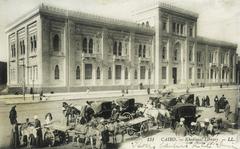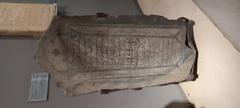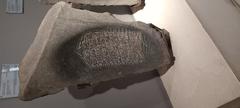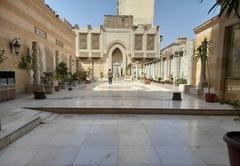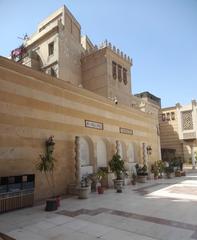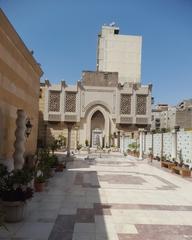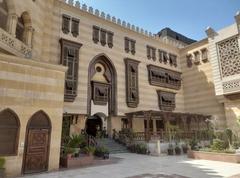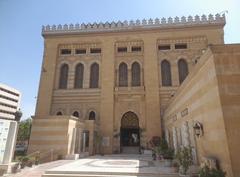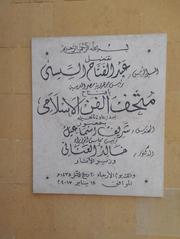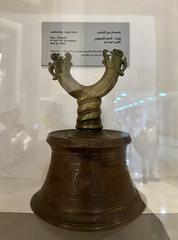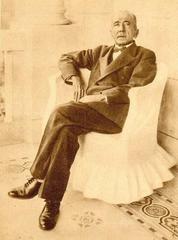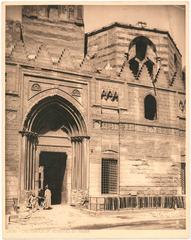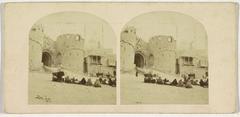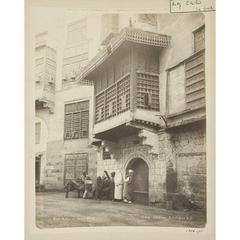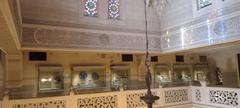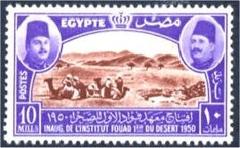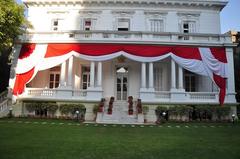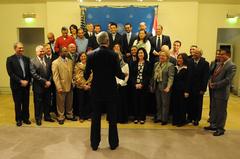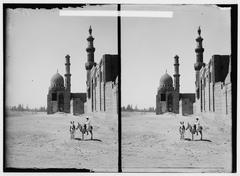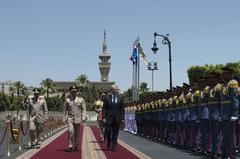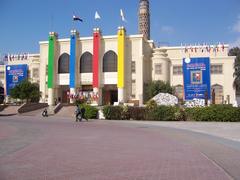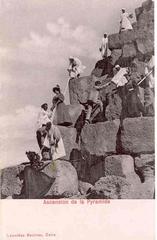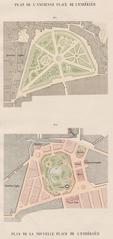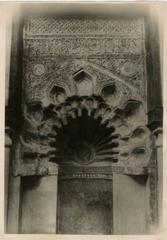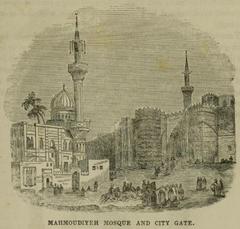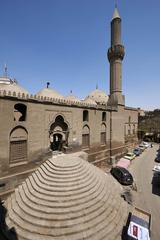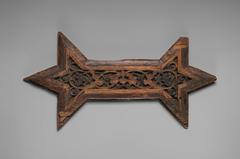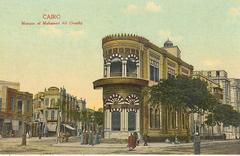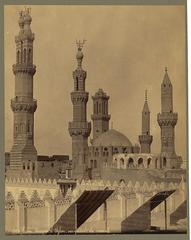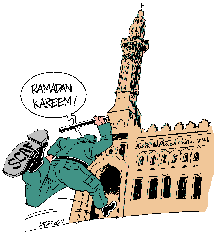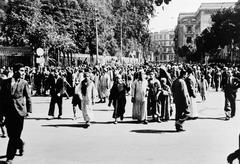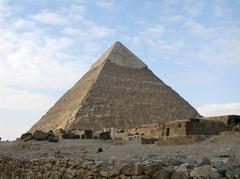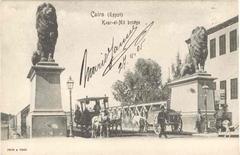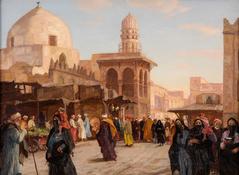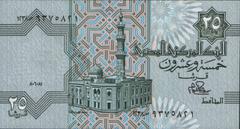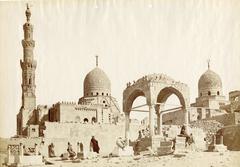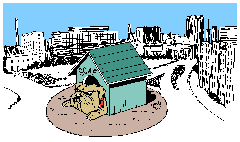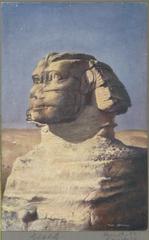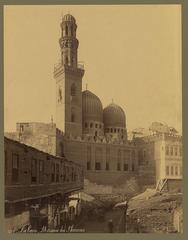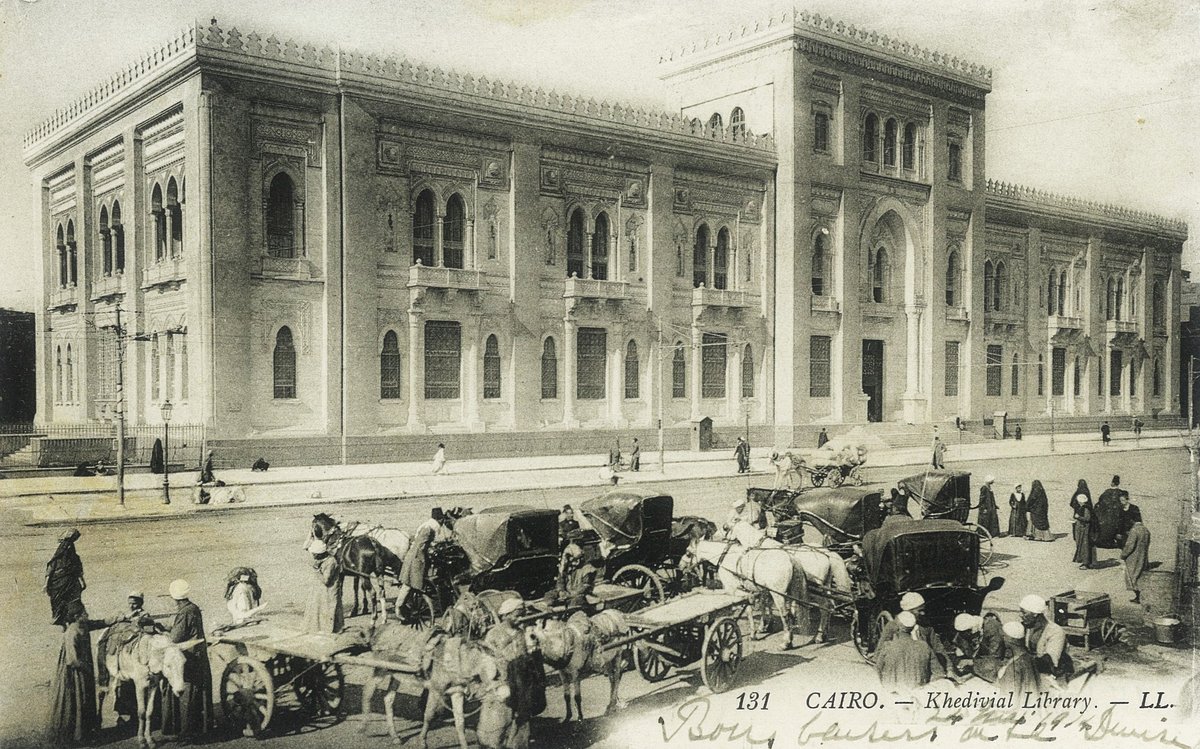
Museum of Islamic Art in Cairo: Visitor Information, Tickets, and Historical Significance
Publication Date: 18/07/2024
Introduction to the Museum of Islamic Art in Cairo
The Museum of Islamic Art (MIA) in Cairo is a beacon of cultural heritage and artistic brilliance, housing one of the world’s most comprehensive collections of Islamic art. Established in 1880 under the aegis of Khedive Tawfiq Pasha, the museum stands at the eastern courtyard of the historic Al-Hakim Mosque, a monument from the Fatimid era. The architectural design by Friedrich Wilhelm Kühnel is a harmonious blend of various Islamic styles, showcasing the rich diversity of Islamic art across different regions and periods (Museum of Islamic Art) (Google Maps).
Islamic art, characterized by its intricate geometric patterns, calligraphy, and aniconism, is a reflection of the cultural, scientific, and spiritual achievements of Islamic civilizations. The museum’s layout, with its central open-air courtyard and chronologically arranged galleries, offers visitors an immersive journey through 1,400 years of artistic excellence from across the Islamic world. The MIA not only preserves these invaluable artifacts but also serves as a testament to the artistic ingenuity and intellectual heritage of Islamic societies. Whether you’re a history enthusiast, an art lover, or a curious traveler, the Museum of Islamic Art in Cairo is a must-visit destination that promises a rich and enlightening experience.
Table of Contents
- A Legacy of Islamic Art and Architecture
- The Museum’s Beginnings
- Architectural Fusion
- Interior Harmony
- Visiting Hours and Ticket Information
- Travel Tips and Nearby Attractions
- Special Events and Guided Tours
- Continuous Evolution
- A Symbol of Cultural Heritage
- Frequently Asked Questions
A Legacy of Islamic Art and Architecture
The Museum of Islamic Art (MIA) in Cairo stands as a testament to the rich artistic heritage of the Islamic world, housing one of the largest collections of Islamic art and artifacts globally. Its history and architectural design are intertwined, reflecting a deep appreciation for Islamic aesthetics and craftsmanship.
The Museum’s Beginnings
The idea for a museum dedicated to Islamic art in Egypt was first proposed in the mid-19th century. However, it wasn’t until 1880 that Khedive Tawfiq Pasha, the ruler of Egypt at the time, commissioned the construction of the museum. The chosen location was the eastern courtyard of the historic Al-Hakim Mosque, a significant religious site dating back to the Fatimid era (909-1171 CE), known for its imposing minarets and unique architectural features.
Architectural Fusion
The museum’s design, entrusted to the renowned German architect Friedrich Wilhelm Kühnel, reflects a harmonious blend of architectural styles prevalent in the Islamic world. Kühnel drew inspiration from various periods and regions, resulting in a building that embodies the diversity and richness of Islamic artistic traditions. The museum’s façade features intricate details inspired by Mamluk and Ottoman architectural styles, with pointed arches, known as “iwans,” and delicate arabesque patterns and calligraphy.
Interior Harmony
Stepping inside the MIA is akin to entering a sanctuary of Islamic art and design. The museum’s interior is designed around a central, open-air courtyard, a common feature in Islamic architecture. This courtyard provides a sense of tranquility and allows natural light to illuminate the surrounding galleries. The galleries are arranged chronologically and thematically, guiding visitors through a journey across various periods and regions of the Islamic world.
Visiting Hours and Ticket Information
The Museum of Islamic Art is open daily from 9 AM to 5 PM, except on Fridays when it opens from 1:30 PM to 5 PM. Tickets can be purchased at the entrance, with prices set at 100 EGP for adults and 50 EGP for students. Children under 6 enter for free.
Travel Tips and Nearby Attractions
Located in the heart of Cairo, the museum is easily accessible by public transportation or taxi. Nearby attractions include the historic Al-Hakim Mosque and the bustling Khan El Khalili bazaar, perfect for a full day of cultural exploration. Consider combining your visit to the MIA with these sites to get a comprehensive experience of Cairo’s rich history.
Special Events and Guided Tours
The MIA frequently hosts special exhibitions and events, showcasing specific themes or periods of Islamic art. Guided tours are available and highly recommended for those who wish to gain deeper insights into the exhibits. Check the museum’s official website for up-to-date information on upcoming events and tour schedules.
Continuous Evolution
Over the years, the MIA has undergone several renovations and expansions to accommodate its growing collection and enhance the visitor experience. In 1983, a new wing was added to the museum, providing additional exhibition space and modern facilities. More recently, the museum underwent a major renovation project, completed in 2010, which aimed to restore the building to its former glory and implement state-of-the-art conservation techniques.
A Symbol of Cultural Heritage
The Museum of Islamic Art in Cairo stands as a symbol of Egypt’s rich cultural heritage and its role as a cradle of Islamic civilization. Its stunning architecture, a testament to the skill of its creators, provides a fitting backdrop for a collection that encapsulates the artistic brilliance of the Islamic world.
Frequently Asked Questions (FAQ)
What are the opening hours of the Museum of Islamic Art in Cairo? The museum is open daily from 9 AM to 5 PM, except on Fridays when it opens from 1:30 PM to 5 PM.
How much are the tickets for the Museum of Islamic Art? Ticket prices are 100 EGP for adults and 50 EGP for students. Children under 6 enter for free.
Are there guided tours available? Yes, guided tours are available and highly recommended for a more in-depth understanding of the exhibits.
What are some nearby attractions? Nearby attractions include the historic Al-Hakim Mosque and the Khan El Khalili bazaar.
Stay Updated
For more information and updates, visit the museum’s official website or follow them on social media. Don’t forget to check out our other related posts and download our mobile app Audiala for more travel guides and tips.
Summary and Final Thoughts
The Museum of Islamic Art in Cairo is more than just a repository of artifacts; it is a portal to understanding the multifaceted legacy of Islamic art and culture. With its vast collection spanning ceramics, metalwork, textiles, manuscripts, and woodwork, the museum encapsulates the artistic achievements and cultural values of Islamic civilizations over centuries. Each exhibit, from the exquisite Quran manuscripts to the intricate Mamluk metalwork, tells a story of artistic brilliance, scientific advancement, and spiritual depth.
The MIA’s role extends beyond preservation; it actively engages visitors through special exhibitions, guided tours, and educational programs, making Islamic art accessible and relevant to contemporary audiences. The museum’s ongoing renovations and expansions further enhance its capacity to showcase this rich heritage, ensuring its treasures are preserved for future generations (Museum of Islamic Art).
As visitors explore the museum’s galleries, they gain a deeper appreciation for the diversity and sophistication of Islamic art. The Museum of Islamic Art in Cairo stands as a symbol of Egypt’s rich cultural heritage and its enduring influence on the world. A visit to the MIA offers not just a glimpse into the past, but an inspiring connection to a living tradition that continues to shape our understanding of art and culture today.
References and Further Reading
- Museum of Islamic Art. (n.d.). Retrieved from Museum of Islamic Art
